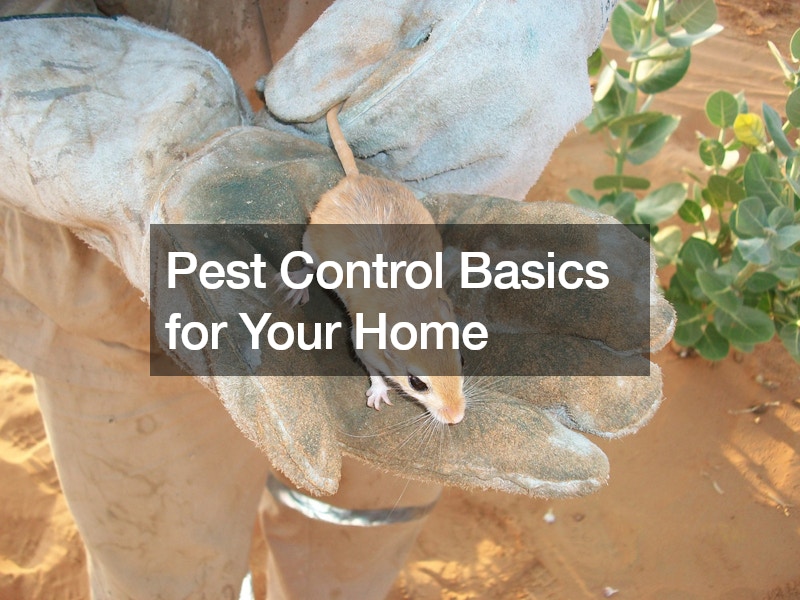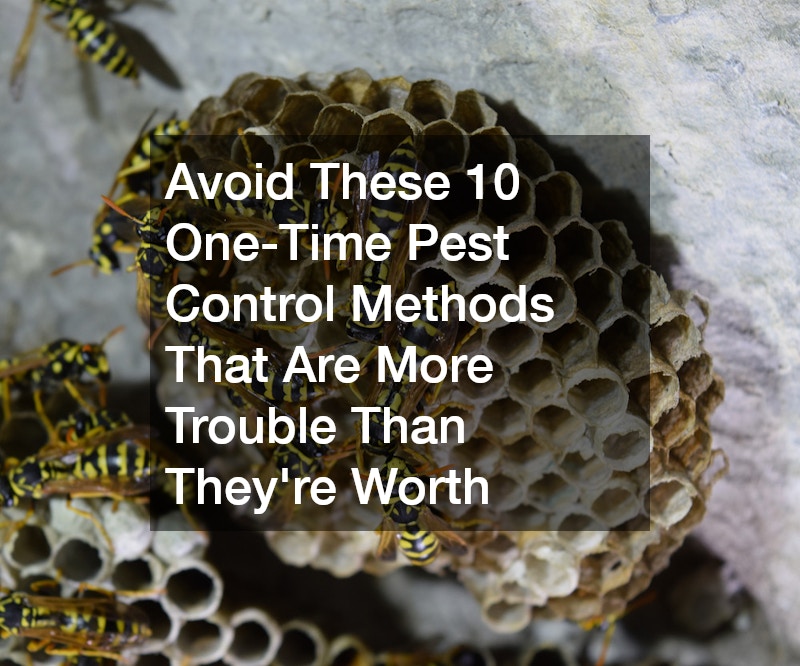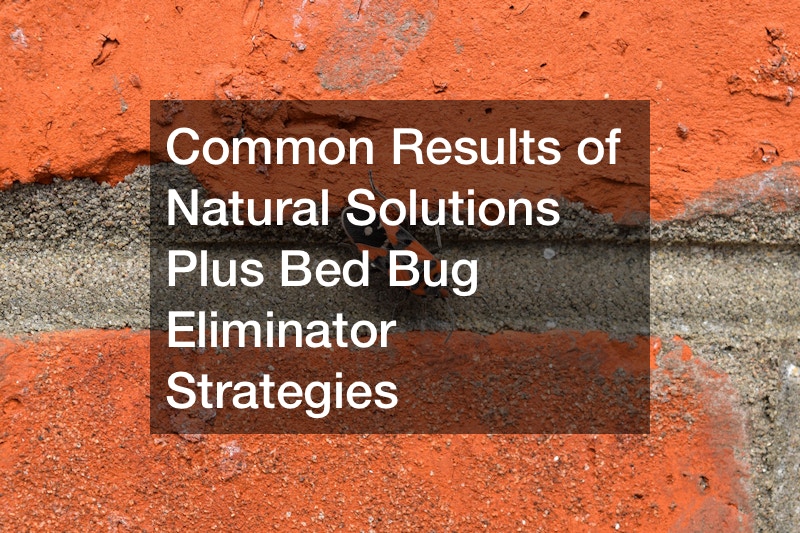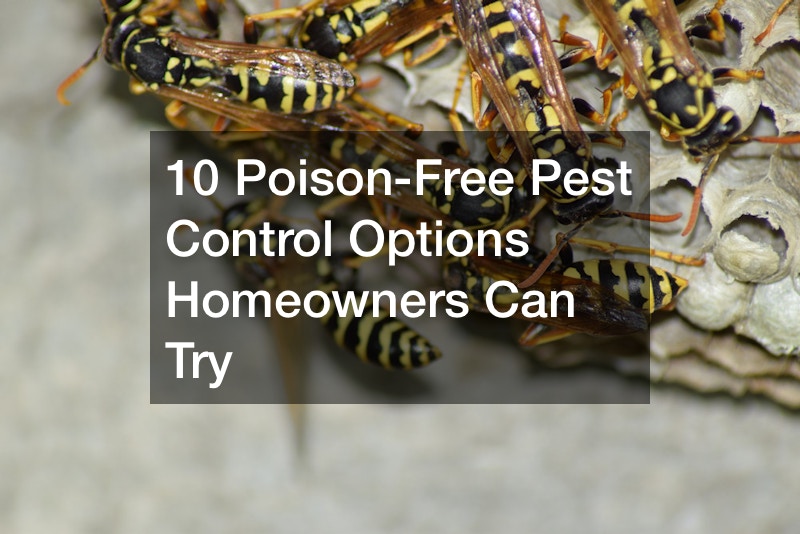Ensuring a pest-free home is crucial for maintaining a healthy and comfortable living environment. Pests such as rodents, insects, and other unwelcome creatures can cause significant structural damage and pose health risks to your household. This comprehensive guide will detail various strategies and services to defend your home from potential pest invasions. We’ll discuss essential topics from tree removals and plumbing services to landscape design and heat pump service, each playing a role in keeping pests at bay. By understanding pest control basics and implementing these solutions, you can proactively protect your home and family.
Let’s dive into effective methods for removing potential pest homes, including removing trees and stumps, which could serve as breeding grounds. Also, rodent-proofing your plumbing is vital as these creatures often use pipes as entry points. Landscaping can either attract or repel pests, so we will explore natural landscaping techniques to deter them. Paying attention to warm spaces in your home can help prevent pest infestations; we’ll cover heat pump services and other measures to monitor these areas better.
Fixing leaky pipes isn’t only about conserving water; it also helps in pest control. New fencing around your property can be a deterrent, and we’ll look into the best practices for installing effective barriers. Restoring damaged sections of your home, like those affected by water and mold, can prevent pests from settling in. Lastly, we’ll emphasize the importance of hiring professionals, including pest control experts and other services, to ensure a comprehensive approach to maintaining a pest-free home.
Remove Potential Homes

One of the primary strategies in pest control basics is to eliminate potential homes for pests around your property. Tree removals play a significant role in this process. Dead or decaying trees provide an attractive habitat for pests such as termites, ants, and rodents. Removing these trees can significantly reduce the chances of pests making your home their own. Additionally, tree removals can help mitigate the risk of falling branches, which can also contribute to pest problems if they damage your home.
Understanding pest control basics related to tree removals is essential. When removing trees, it’s crucial to also address the stumps left behind, as they can become breeding grounds for pests like termites. Professional tree removal services will often include stump grinding to ensure that these remains do not become a new home for pests. Regularly inspecting your property for dead or dying trees and promptly removing them can make a significant difference in your pest control efforts.
Beyond tree removals, implementing general pest control basics around your home is vital. This includes removing standing water, keeping trash covered, and sealing cracks and holes where pests could enter. Maintaining clean and dry conditions inside your home and around your property can help deter pests from settling in. Regularly scheduling pest control services can also be a proactive measure to ensure any potential infestations are identified and managed promptly.
Rodent-Proof Your Plumbing
Another crucial aspect of pest control basics involves rodent-proofing your plumbing. Rodents, particularly rats and mice, are notorious for using plumbing systems to access homes. Once inside, they can cause substantial damage by gnawing on pipes, wires, and insulation. Investing in professional plumbing services to inspect and rodent-proof your plumbing can prevent these entry points and protect your home from infestations.
Effective rodent-proofing of plumbing often involves several steps. Sealing gaps around pipes with metal mesh or concrete can prevent rodents from entering through these vulnerable points. Installing one-way valves or screens on pipes can also stop rodents from breaching your plumbing system. These strategies are part of the broader pest control basics that every homeowner should be familiar with.
Regular maintenance and inspection are crucial components of pest control basics. Alongside professional plumbing services, homeowners should routinely check for signs of rodent activity, such as droppings or gnaw marks, around plumbing fixtures. If any signs are detected, immediate action is necessary to prevent a minor issue from becoming a significant infestation. By combining regular inspections, professional services, and proactive measures, homeowners can effectively rodent-proof their plumbing systems.
Natural Landscaping for Prevention
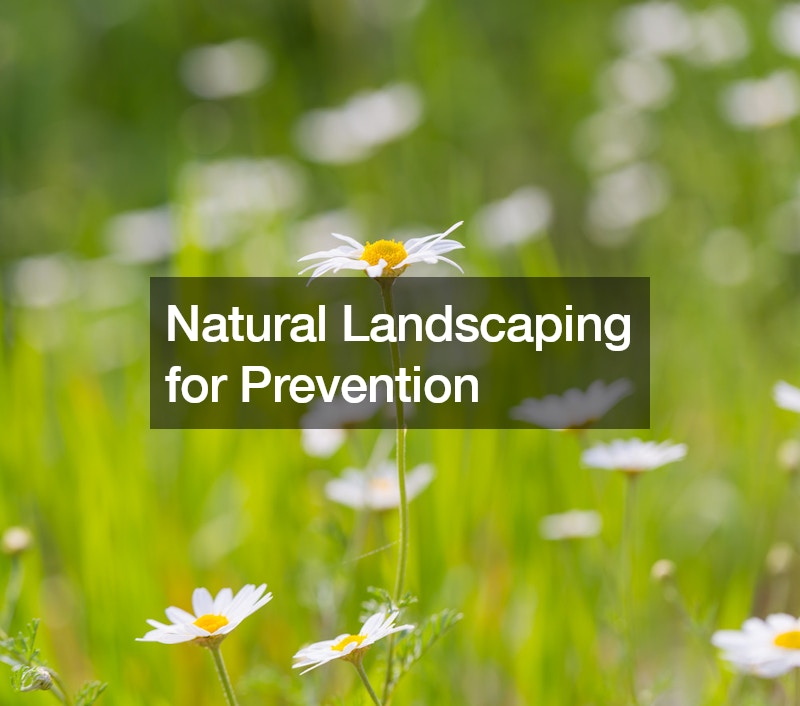
Landscaping is more than just an aesthetic consideration; it plays a significant role in pest control basics. Natural landscaping can serve as a powerful deterrent to pests. By working with a professional landscaper, homeowners can design a yard that minimizes habitats for pests. For example, incorporating plants that repel pests, such as lavender and rosemary, can help keep insects like mosquitoes and flies at bay.
Maintaining a clean and clutter-free yard is essential in pest control basics. Overgrown vegetation, piles of leaves, and other debris can provide ideal hiding places for pests. A professional landscaper can help keep your yard tidy and free from potential pest habitats. Regularly trimming shrubs, mowing the lawn, and removing organic debris are necessary steps in preventing pest infestations.
Incorporating pest control basics into your landscaping plan can also involve strategic planting. Certain plants can attract beneficial insects that prey on pests, creating a natural pest control system. Moreover, landscape features like gravel barriers can prevent pests from accessing your home. Consulting with a knowledgeable landscaper will ensure that your yard is not only beautiful but also a critical component of your pest control strategy.
Monitor Warm Spaces
Warm spaces within your home can often attract pests, particularly during colder months. Monitoring these areas is a critical part of pest control basics. Heat pumps and heating systems can provide the warmth that pests seek. Ensuring regular heat pump service and maintenance is essential to keeping these areas free from infestations. A reputable heat pump service can help identify and address any issues that might make your home more attractive to pests.
Beyond just the heat pump, homeowners should be aware of other warm spaces within their home that might attract pests. Attics, basements, and even wall cavities can become hot spots for pest activity. Implementing pest control basics requires routine inspection and monitoring of these areas. Look for signs like droppings, nests, or other indications of pest presence, and take immediate action if any are found.
Practicing pest control basics also involves ensuring proper insulation and sealing in these warm spaces. Gaps and cracks should be sealed to prevent pests from gaining entry. Regularly checking and maintaining these areas are crucial steps in your overall pest control strategy. Professional heat pump services and pest control experts can provide additional support and solutions to keep your home free from pests.
Fix Leaking Pipes
Fixing leaking pipes is another fundamental aspect of pest control basics. Leaky pipes can provide a water source for pests like cockroaches, ants, and rodents. Addressing these issues promptly with professional plumbing services is essential. Not only does this conserve water and prevent water damage, but it also removes a critical resource that pests need to survive.
Regular inspection and maintenance of your plumbing system are integral parts of pest control basics. Homeowners should routinely check for signs of leaky pipes, such as water stains, dampness, or mildew. Engaging plumbing services to address these issues ensures that your home remains an inhospitable environment for pests. A thorough inspection can help identify not just apparent leaks but also hidden ones that could become problematic.
Additionally, integrating pest control basics into your plumbing maintenance routine can involve looking beyond just leaks. Ensuring that drains and other plumbing fixtures are clean and functional helps prevent pest infestations. Regularly using drain cleaners and traps can mitigate pest problems before they start. By combining plumbing services with proactive pest control measures, homeowners can protect their homes from potential invasions.
Install New Fencing
Installing new fencing around your property is a viable strategy in pest control basics. Fences can act as physical barriers that deter various pests from entering your yard and home. Engaging professional fence contractors ensures that the fencing is properly installed and effective. They can recommend materials and designs that are particularly resistant to pest activity, providing an added layer of protection for your property.
When considering new fencing, it’s essential to understand how different types of fences can impact pest control. For example, metal and vinyl fences are generally more pest-resistant compared to wooden fences, which can be vulnerable to termites and other burrowing creatures. Consulting with fence contractors about the best options for your specific pest control needs is a crucial part of this process.
Incorporating pest control basics into your fencing strategy also involves regular maintenance. Ensuring that the fence remains in good condition, with no gaps or holes, is essential. Frequent inspections and repairs as needed will keep the fence effective as a pest deterrent. Partnering with fence contractors for routine checks and maintenance can help ensure your fencing remains a robust component of your overall pest control plan.
Restore Damaged Areas of the Home
Restoring damaged areas of your home is crucial in pest control basics. Damaged sections, particularly those affected by water and mold, can become breeding grounds for pests. Engaging in water and mold restoration services can help eliminate these problem areas. By addressing and repairing damage promptly, homeowners can prevent pests from finding shelter and resources within these compromised spaces.
Water and mold restoration typically involves removing any standing water, thoroughly drying affected areas, and addressing the root causes of moisture problems. Regular inspections for leaks and dampness are essential components of pest control basics. By ensuring that no area of your home remains a potential pest habitat, you can significantly reduce the risk of an infestation.
Maintaining a pest-free home also involves preventative measures beyond restoration. Ensuring that any repairs are robust and durable can prevent future problems. Engaging professionals experienced in both water and mold restoration and pest control basics can provide a comprehensive solution. These experts can recommend additional preventive measures, such as better ventilation and humidity control, to keep your home in optimal condition.
Install New Gutters

Installing new, seamless gutters is another vital aspect of pest control basics. Proper gutter installation and maintenance ensure that water is efficiently carried away from your home, preventing potential pest attractants like standing water. Seamless gutters, in particular, are less likely to have joint leaks or clogs, making them an effective choice for pest control.
Ensuring your gutters remain clean and functional is a critical part of pest control basics. Regularly clearing out leaves, twigs, and debris prevents water from collecting and creating a breeding ground for pests such as mosquitoes. Professional seamless gutter installation not only enhances the aesthetic appeal of your home but also supports your pest control efforts.
The importance of gutters extends to their role in protecting your home’s foundation from water damage. By effectively channeling water away, seamless gutters help maintain dry conditions around your home, which is less inviting to pests. Regular inspections and maintenance of your gutter system by professionals can ensure that it continues to function optimally and contribute to a comprehensive pest control strategy.
Excavate Landscaping
Excavating landscaping around your property is an essential but often overlooked aspect of pest control basics. Sometimes, landscaping features like old tree roots, buried debris, and improperly graded soil can harbor pests. Engaging excavating contractors can help you remove these hidden pest habitats. Proper excavation ensures that the soil is graded away from your home’s foundation, helping to prevent water accumulation and reducing pest attraction.
Professional excavating contractors can assist in creating a landscape that deters pests. This might include removing old tree stumps, leveling uneven ground, and installing proper drainage systems. By addressing these issues, you not only improve the aesthetics and usability of your yard but also support pest control basics by eliminating potential breeding grounds.
Excavation as part of pest control basics also involves preparing the ground for new landscaping projects that consider pest deterrence. Proper planning and execution help create an environment that is entirely inhospitable to pests. Consulting with experienced excavating contractors ensures that your landscape is both beautiful and functional in terms of pest prevention strategies.
Hire Professionals
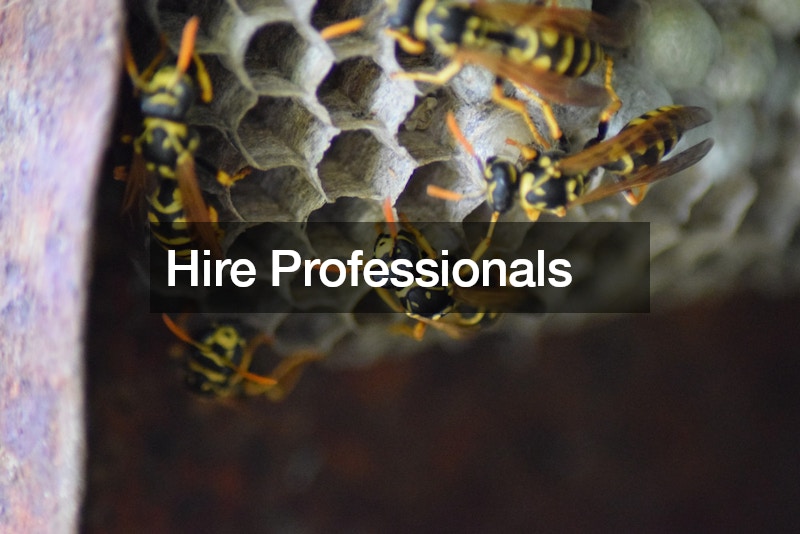
While many aspects of pest control basics can be managed through DIY efforts, some situations call for professional intervention. Hiring professionals ensures that you benefit from their expertise, advanced tools, and effective treatments. Pest control experts can provide a thorough inspection of your home, identify potential problem areas, and recommend tailored solutions to address existing infestations and prevent future ones.
Pest control professionals have access to specialized equipment and products that might not be available to the general public. These tools are often more effective at eliminating pests and preventing them from returning. Engaging professionals for regular pest control services is a proactive step in maintaining a pest-free environment in your home.
Understanding pest control basics includes recognizing when to call in experts. For persistent or widespread infestations, professional pest control services are invaluable. They can provide customized treatment plans and continuous monitoring to ensure long-term protection. Combining professional services with ongoing personal maintenance enables a comprehensive approach to effective pest control.
Maintaining a pest-free home requires a comprehensive strategy that encompasses various aspects of home maintenance and professional services. From tree removals to seamless gutters, each component plays a critical role in preventing pests from finding homes within your property. Understanding and implementing pest control basics, such as rodent-proofing your plumbing, fixing leaky pipes, and regularly monitoring warm spaces, are foundational steps in this endeavor. These actions not only protect your home from structural damage but also safeguard your family’s health and well-being. Natural landscaping, regular water and mold restoration, and proper excavation of your yard are additional steps that can significantly reduce the risk of pest infestations. Incorporating these pest control basics into your routine helps create an uninviting environment for pests. Engaging professional services, from plumbing and heat pump service to fence contractors and pest control experts, ensures that your preventive measures are thorough and effective. By staying vigilant and proactive, homeowners can successfully manage and prevent pest infestations. Understanding the importance of each element, from tree removals to professional pest control services, contributes to a holistic approach. This detailed guide offers the knowledge and strategies needed to maintain a pest-free home. Implementing these pest control basics ensures a safer, healthier living environment for you and your family.
